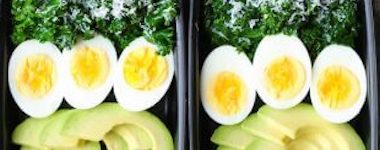After 12 years of missing being in Japan for the biggest holiday, New Year’s Day, I was able to spend the quality of time with my family this year. Like American holidays, we get together with extended family and eat certain foods! Yes, we eat a lot, too! But there are reasons that we eat particular foods for the New Year. The beginning of year is very important to set goals and wish for well-being and happiness of our lives. I would like to introduce some of our culture and wish you all a wonderful 2014.
January 1st in the morning we started with O-Toso (We add “O” to be polite). Toso is drunk to flush away the previous year’s maladies and to aspire to lead a long life. For generations it has been said that “if one person drinks this his family will not fall ill; if the whole family does no-one in the village will fall ill”, and has been a staple part of New Year’s O-Sechi (traditional Japanese New Year foods)
Toso is written using two Japanese characters: To- representing evil spirits and So- meaning to defeat.
Toso is made by combining several medicinal herbs to form tososan, a spicy mixture, which is then soaked in sake.
Three sizes of cup, called sakazuki (see picture), are used starting with the smallest, and passed round with each family member or guest taking a sip. Drinking rituals differ by region, but in formal situations would proceed from youngest to eldest. This tradition originated in China whereby the young effectively test the drink for toxins. However, in Japan, around 100 years ago customs changed and the head of the household usually takes the first drink (so my Dad took a first sip).

After O-Toso, we drink “Fukucha” (White bowl) – Hot water with musubi-kombu (Tied kelp) and pickled plum. (See pictures). Kelp, “Kombu or Kobu” reminds you “Yorokobu”, Joy in English and by tying kelp, it means tying happiness among family and friends. Then we have O-Zoni (Red bowl), a kind of soup (White miso, soybean paste, soup in my hometown Osaka) with rice cakes (mochi) and vegetables. Mochi has been considered a sacred food since ancient time because rice cultivation has always been indispensable for the Japanese. It’s the origin for Japanese people eat mochi during New Year.



Then we eat O-sechi, the traditional Japanese New Year foods. The tradition started in the Heian Period, (794-1185). O-sechi are easily recognizable by their special boxes called Jubako, which resemble Bento (Lunch) boxes. Like Bento boxes, Jubako are often kept stacked before and after use (See pictures). The horse is drawn on the top of the box because 2014 is the year of horse in 12 Zodiac Animal Calendar.





Japanese culture encompasses over a thousand years of tradition and ritual, and food is no exception. Ingredients, preparations and even colors each have their own story, symbolism and seasonal importance. New Year’s has its own meal, full of dishes that are made specifically to be eaten the first day of the year.
Some examples are:
- Kamaboko- broiled fish cake. Traditionally, slices of red and white kamaboko are alternated in rows or arranged in a pattern. The color and shape are reminiscent of Japan, rising sun, and have a celebratory, festive meaning.
- Kazunoko- herring roe. Kazu means “number” and ko means “child”. It symbolizes a wish to be gifted with numerous children in the New Year.
- Kuromame- black soy beans. Mame also means “health” symbolizing a wish for health in the New Year.
- Ebi- prawns. It symbolizes a wish for a long-life, suggesting long beard and bent waist.
- Kuri-Kinton- Sweetened and mashed sweet potatoes mixed with mashed chestnuts. The golden color of the dish represents a wish for prosperity and financial success.
- Ko-Haku-Namusu- Pickled carrots, daikon and radishes, put together to display red and white colors and symbolize happiness and a reminder to remember your roots
- Whole salmon or fish- Serving the fish whole is for endurance and returning to your place of origin.
There were total 42 different dishes in the 3 boxes. As you can imagine I was full after eating a little bit of everything. That’s what we eat during our holiday! To be honest, O-Sechi is not my favorite food but we do eat every year because each dish or ingredient has meanings and we wish for it for our family. Just like American culture, holidays are for a family gathering with good foods, good laughs and happiness!
I know some of you had a concern about what to eat during the holidays but I hope you had a great holiday season with your family or loved one (with healthy foods!) and get ready for better, happier and healthier 2014.


